AECT Standard 5
AECT Standard 5 (Research): Candidates explore, evaluate, synthesize, and apply methods of inquiry to enhance learning and improve performance.
Read below to explore my artifacts.


Artifact 1: Funding Technology Procurement and
Life Cycle Replacement Research Paper
Context & Conditions
The research paper Funding Technology Procurement and Life Cycle Replacement (funding technology) was a requirement of EDET 746 Management of Technology Resources, which was completed during my fourth semester of the M.Ed. Learning Design and Technologies program. This paper was written after completing research on various technology procurement and life cycle replacement plans that are accessible online. My research was mainly focused on technology procurement and life cycle replacement plans within school buildings, school districts or state education as a whole.
Due to having a professional background in special education, when tasked with writing this paper I knew what topic I wanted to research. My focus was on implementing social emotional learning (SEL) curriculums within classrooms for teachers and students to benefit from. Teachers benefit due to having a structured curriculum with premade mini lessons, appropriate text, and software for students. Students benefit from exposure to proper SEL curriculum and instructional time to ensure SEL skills are taught and not automatically expected. When writing this paper, I focused on the benefits of a district purchasing an SEL software such as student development, better classroom community/school culture, in the long run less instructional time lost due to students having proper skills, teachers being able to focus on academic instructional planning instead of emotional regulation skill building, etc.
Prior to focusing on the funding and procurement section, I conducted research on possible funding options for the proposed software. Many options are available to various schools regardless of demographics. To ensure that the implementation of the proposed software was beneficial, an evaluation and life cycle was proposed. The purpose of this is to ensure funds and resources are being allocated appropriately for all parties involved. The maintenance and professional development section is necessary to ensure proper implementation of the proposed software, which leads to the ability to evaluate the implementation accurately.

Scope
The purpose of this research paper was to understand a technology procurement and life cycle plan. The assignment allowed for exploration of the topic as well as experience preparing a plan for executive administrators or educational institutions. It also allowed for exploration and understanding of internal and external funding sources.
Role
This research paper was completed as an individual assignment. I acted as the sole researcher, author, and editor of the assignment.
Instructional Design
This research paper relates to the contextual analysis element of Morrison, Ross, and Kemp’s Model for Instructional Design (MRK). This research paper was written for the purpose of audience and stakeholders to view, review and consider. During a contextual analysis the learners’ perspective is highly focused on (Morrison et al., 2019). This artifact would fall under the analysis phase of the ADDIE Instructional Design Model (ADDIE). When conducting the analysis phase of ADDIE, the instructional designer must consider the target audience and determine the informational needs of the audience (Peterson, 2003).
Related Performance Indicator
AECT Standard 5 (Research): Candidates explore, evaluate, synthesize, and apply methods of inquiry to enhance learning and improve performance.
Indicators:
-Theoretical Foundations – Candidates demonstrate foundational knowledge of the contribution of research to the past and current theory of educational communications and technology.
-Method – Candidates apply research methodologies to solve problems and enhance practice.
-Assessing/Evaluating – Candidates apply formal inquiry strategies in assessing and evaluating processes and resources for learning and performance.
-Ethics – Candidates conduct research and practice using accepted professional and institutional guidelines and procedures.
Reflection
During this paper I learned the components and how to design a technology procurement and life cycle replacement plan, various funding sources/options for educational technology/software, and the components of proper maintenance and professional development when implementing new technologies. When writing this research paper, I was able to use previously learned skills in the area of research, proper APA research paper writing, and proper writing format.
When writing this paper choices were made as to which information was necessary to include in the procurement and replacement plan. If I were to create a technology procurement and life cycle replacement plan again, there are a few areas that I would expand on to ensure appropriate and necessary information is included for the audience and stakeholders. When explaining the benefits of the software, impactful points were made. However, these points could have been further supported and explained using various information provided via books and articles. For the funding and procurement section, each funding option should have been briefly explained instead of assuming that my audience would know the background of the funding options. When writing maintenance and professional development, it would have been beneficial to explain in depth professional development. If written again, I would thoroughly describe the content of the professional development sessions and provide examples for the structure of the professional development sessions.
Throughout the M.Ed. Learning Design and Technologies program, I have learned how important the audience and stakeholders are in the design and presentation process. When writing a document or proposal the audience should be in the forefront of your thinking process. In addition, it is necessary to ensure that the information provided is valuable to the audience.

Artifact 2: Effectiveness Evaluation Plan – Case Study
Context & Conditions
This effectiveness evaluation plan document was a requirement of EDET 793 Advanced Instructional Design and Development which was completed during my fifth semester in the M.Ed. Learning Design and Technologies Program. The effectiveness evaluation plan designed was based on a provided case study (Grant et al., 2021). This case study took place within a school building and revolved around the implementation of table computers within fifth grade classrooms. A previous evaluation was completed but the evaluation was deemed inadequate by the stakeholders. Due to this, my team was tasked with planning and designing an effectiveness evaluation plan for the school/district that would appropriately provide information for the stakeholder. This information would be used to assist stakeholders in making a final decision regarding the implementation of tablet computers within the district.
The effectiveness evaluation plan consists of the following sections: introduction, background, purpose, stakeholders, decisions, questions, methods, participants, data collection instruments, planned analysis/results, limitations, logistics, timeline, budget, references, and appendices with sample data collection instruments. In order to complete this plan, my team and I needed to deep dive into the case study to understand the stakeholder factors, background information, previous evaluation, needed answers and decision possibilities. To ensure the evaluation plan we proposed was appropriate and effective, we evaluated the previously conducted evaluation to analyze missing components, data collection instruments and questions. My team decided to use six data collection instruments to answer the following questions: “How does the use of tablet computers improve students’ proficiency in the areas of academics, and computer skills?”, “How satisfied are teachers, parents, students and administrators with students’ learning experiences based on the implementation of tablet computers?”, and “How has classroom instruction been impacted by the implementation of tablet computers?”. The data collection instruments consisted of various academic benchmarks, a standardized assessment, a technology skills assessment, attitude surveys, a teacher focus group, and a teacher technology reflection survey. The team created a planned analysis/results section for each data collection instrument as well as discussed limitations and logistics for the proposed plan.

Scope
The purpose of the effectiveness evaluation plan artifact was to demonstrate knowledge and abilities as an instructional designer in the area of evaluating others work and designing an improved evaluation plan for stakeholders based on a real-world scenario.
Role
The effectiveness evaluation plan was designed by me and two other group members. Our team worked collaboratively on this assignment and all parties were involved in each step of the creation of the evaluation plan. It was our role to evaluate the previous plan, design our improved plan, and to ensure all components were considered.
Instructional Design
This e-learning module artifact relates to the formative evaluation components of Morrison, Ross, and Kemp’s Model for Instructional Design (MRK). In this area of the MRK model, the designer conducts an evaluation for the audience to determine how well the program is working and to ensure time and resources are being adequately allocated (Morrison et al., 2018). This artifact would fall under the evaluation phase of the ADDIE Instructional Design Model (ADDIE). When conducting a formative evaluation in the evaluation phase of ADDIE, the instructional designer must use instruments to decide if the objectives have been achieved and/or if any changes need to be made to improve the product (Peterson, 2003).
Related Performance Indicator
AECT Standard 5 (Research): Candidates explore, evaluate, synthesize, and apply methods of inquiry to enhance learning and improve performance.
Indicators:
-Theoretical Foundations – Candidates demonstrate foundational knowledge of the contribution of research to the past and current theory of educational communications and technology.
-Method – Candidates apply research methodologies to solve problems and enhance practice.
-Assessing/Evaluating – Candidates apply formal inquiry strategies in assessing and evaluating processes and resources for learning and performance.
-Ethics – Candidates conduct research and practice using accepted professional and institutional guidelines and procedures.
Reflection
During the creation of this effectiveness evaluation plan I learned how to evaluate a real-world scenario in order to design an evaluation plan for the purposes of providing necessary information to stakeholders. In addition, I gained practice designing an evaluation plan and ensuring alignment between all components to establish a robust data collection and analysis plan.
When designing this plan, it was most important to the group that the data collection instruments would provide sufficient information to answer the proposed evaluation questions. In the previous evaluation, the data collection instruments were inadequate in resulting in wide-spread data that covered all areas of consideration for the stakeholders. Choosing which data collection instruments to utilize and determining how many instruments were necessary was the most difficult challenge of this document. In addition, we needed to ensure that the data collection instruments chosen were feasible to implement within a school building. Many logistics and limitations needed to be considered. Throughout the design of this plan, my team and I altered and changed course with our decision of instruments a few times. It was necessary to continue to review the chosen instruments once thoroughly considering the effectiveness of them within the evaluation setting. Originally, the team had chosen to utilize further data collection, but it was determined that the excess data collection would result in skewed data results due to the nature of the item.
Throughout the M.Ed. Learning Design and Technologies program, I have learned how important alignment is within evaluations. Each section of an evaluation guides or impacts another component. In order to have a successful evaluation plan, the data collection instruments need to align with the questions being asked to ensure necessary information can be provided to the audience/stakeholders.